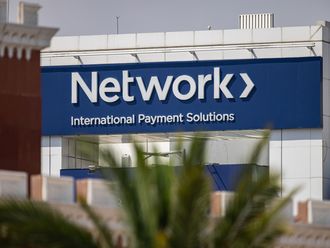The GCC is undergoing a period of rapid transformation as oil prices, which were once at $100 per barrel, have dropped to less than $50 over the past 18 months. Stability in oil prices between 2012 and 2014 enabled the GCC to earn more than $3 trillion in export revenues, which means that local government reserves are strong.
This, however, is only a short-term comfort. GCC governments have an extremely high dependency on oil revenues and they lack economic diversification in their policies, so the potential depletion rate of their reserves has been highlighted as a major cause for concern.
In principle, GCC governments need oil prices to be much higher than $50 per barrel in order to balance their budgets. In reality, prices are significantly lower than desired so the GCC region will face successive years of fiscal and current account deficits, and these deficits will have to be plugged through additional reserve depletion or through borrowing.
Within this context, I would like to look at the financial challenges which low oil prices will pose to four specific stakeholders: government, banks, corporate entities and individuals.
Government
The biggest pressure is on governments across the GCC region; they have a bloated bureaucratic structure and increasing levels of expenditure (largely comprised of salaries and subsidies).
Therefore, there is little flexibility for them due to the current social welfare model and the strong social contract with nationals. While rationalising subsidies and reducing wasteful expenditure should certainly be prioritised, this may not reduce deficits within the required and urgent time frame. Hence, the biggest financial challenge for GCC governments will be funding growing deficits.
The International Monetary Fund (IMF) estimates GCC countries to pose a fiscal deficit of about 12 per cent of GDP or $150 billion in 2016. I expect this to be met through a judicious combination of reserves, local debt and foreign debt. Research estimates by Marmore point to the cumulative debt increasing to $250 billion to $390 billion by 2020, a significant jump from the $72 billion raised cumulatively between 2008-2014.
Such a massive growth in debt raising is bound to have an impact on the overall economy in multiple ways. In 2015, for the first time in eight years, Saudi Arabia had to secure a loan of approximately $26 billion from domestic banks. The government there is also trying to raise $10 billion from a consortium of international banks in an effort to address its growing budget deficit.
Most notably, the credit rating will be lowered as a consequence of the increasing debt-to-GDP ratio. Sovereign ratings of Bahrain, Oman and Saudi Arabia have already been downgraded recently and further downgrades are expected in the future. Another point of impact will be the Credit Default Swap (CDS) spreads. In the last six months, CDS spreads of Abu Dhabi, Qatar and Bahrain have doubled while Saudi Arabia’s has tripled.
Lower levels of liquidity will be the key financial challenge for banks - to a great extent they are largely depend upon government deposits for their liquidity, and yet they have experienced significant decreases. With stagnating growth in deposits, banks will have less to lend at a lower spread and this will have a negative impact on their profitability.
On the other hand, sovereign bond issuances will see high levels of subscription by banks because of the attractive yields and their risk free nature, and this will crowd out lending to the private sector. The pressure this will introduce to bank margins will result in lower profitability.
Corporates
The ‘crowding out’ of banks will directly impact the private sector, since fund raising will become increasingly difficult and expensive. Until now, many companies have solely depended upon government spending for projects. In the current climate, project delays are inevitable and may affect working capital.
Advance payments for projects have been slashed from 20 per cent to 5per cent of contract value. Since corporates access banks for most of their short-to-medium funding requirements, access to funding may become difficult and expensive given the pressures banks face resulting from lower liquidity and tighter margins. Debt markets may be an attractive source of funding for governments but not for the corporate sector due to wider spreads demanded by lenders.
The introduction of Value Added Tax (VAT) may also impact corporate profitability. These developments will have a substantial impact on Small and Medium Enterprises (SMEs) who will suffer the most.
Individuals
Financial challenges for individuals will be manifested in different ways. Firstly, generous government subsidies will be cut, especially for the most highly subsidised amenities which are petrol, water and electricity. As subsidies are reduced, the cost of services will increase and lead to higher inflation. Individuals will also have less access to financing options from banks as lending procedures are tightened.
Simultaneously, borrowing costs will also increase. Such market conditions may lead to increased debt defaults. Majority of GCC citizens work for public sector based on implicit social contract to provide employment by the government. Also, with successive years of generous increments, the public sector salary levels are also attractive. However, given the liquidity pressures, government’s ability to accommodate more people in the public sector will be tested.
Opportunities
It is a truism that challenges can also be viewed as opportunities, therefore, increasing government debt will induce financial discipline, better management of fiscal expenditure and more importantly, the much needed development of debt markets.
Efforts to reduce wasteful expenditure will improve productivity levels across sectors, and banks will look for overseas expansion opportunities to improve profitability. The current economic conditions will also encourage the adoption of advanced technology to reduce the cost of service offerings.
Corporate entities will focus heavily on efficiency and productivity gains and align corporate planning with thoroughly researched market needs. There will likely be a rise in mergers and acquisitions, along with alternative financing avenues such as private equity, crowdfunding and sukuks. Ultimately, this challenging period for the government and the private sector means navigating a period of financial reform.
— M. R. Raghu is a member of CFA Society Kuwait











